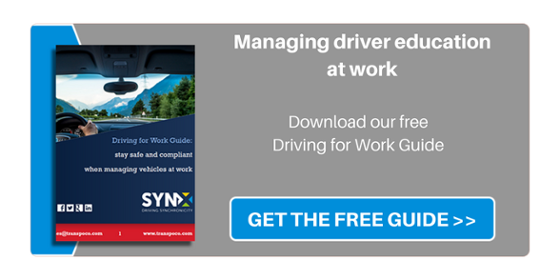
In our fleet management alphabet series, there is something that is not considered as much as it could be, but is still an essential component for companies that have to rely on driving in order to run and develop their business—in this post we are going to talk about drivers. Drivers are imperative for you and an indispensable element of the fleet management chain, at least for the time being, despite the fast evolution of self-driving vehicles and autonomous car technology.
First of all, in the case of fleet management, ‘drivers’ might not only refer to professionals, but also to the staff of a company that either operate their own vehicles in order to perform working tasks (as in the case of grey fleets) or to workers that, in order to perform particular tasks, are required to drive but driving is not their primary occupation.
Following from that: in any organisation that makes use of work-related driving, it might be seen as extremely challenging to ensure that everyone expected to drive for business purposes is appropriately prepared. But that only begins with establishing each driver’s individual driving experience, both personally and professionally, and suitably preparing them for their new driving roles within the organisation.
Driver preparation does not just start with a thorough hiring process, which aims at verifying if drivers are sufficiently qualified, but continues with regular checks regarding the fundamentals of the job. This should include, for example, checking if drivers are aware of sound driving practices like the appropriate use of mirrors, proper road position, the correct use of speed, and whether they are practicing safe and smooth driving or defensive driving—a style that includes a set of driving skills allowing drivers to defend themselves against possible collisions or poor weather conditions, where planning ahead for the unexpected plays a very important role.
Driver preparation does not end here, as drivers should be aware of the procedures for internal and external reporting: if any procedures specifically apply to the company they are driving for (including those that are not perhaps related strictly to driving, but also to logbooks or any other company-related aspect), they should be thoroughly familiarised with them. But this should also include other topics, as drivers should be made aware how their performance on the road impacts on the fleet and the business both positively and negatively. Safe and fuel efficient driving needs to be encouraged and become part of rigorous driver assessment, with detailed feedback and ongoing training that both ensures problems are dealt with and that drivers as employees feel supported.
Managing, training and educating fleet drivers properly makes our roads safer and can at the same time save on the global costs of a business and on the global mileage, but communication must be emphasised in order to help put this into practice. If you expect preparation and reliability from your drivers, you should also provide the means to these ends in the first place, beginning at the top with excellent communication and ongoing collaboration. Doing regular check-ins with drivers is a good starting point to know if they need extra training or if there are some aspects of the job that are not clear and should be better defined. While every business is different (as is every driver), establishing the priorities and needs of drivers is an important step to be taken towards a successful fleet and with a happy team of drivers.



